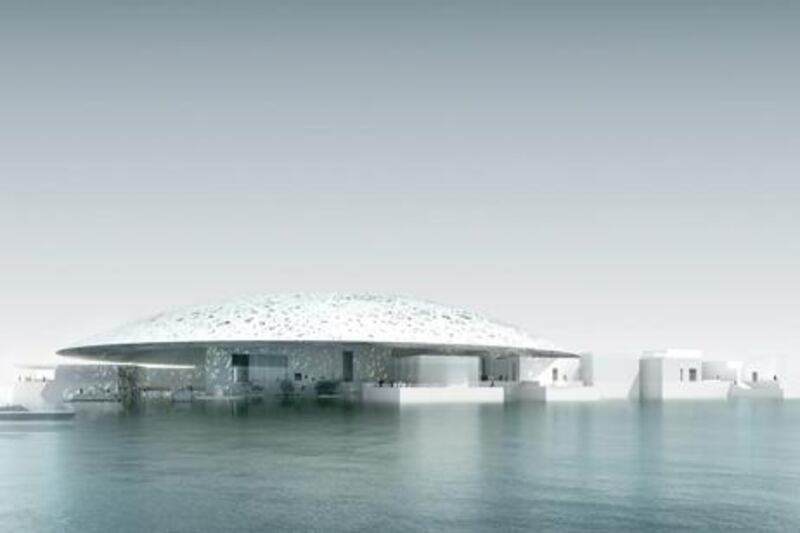The Louvre Abu Dhabi on Saadiyat Island came a step closer to completion yesterday when builders poured the first concrete into one of the four piers set to hold up the museum's massive dome.
Senior management of the Louvre developer, the Tourism Development & Investment Company (TDIC), were on hand at the site to witness contractors pouring the first concrete into the structure that will eventually support the 180-metre wide, 7,000-tonne dome.
Eventually the vast laced dome, which will weigh almost the same as Paris's Eiffel Tower, will be supported by four piers nine metres high at the entrance to the museum and reaching a height of 30 metres inside. The dome is designed to allow light to pass through in a so-called "rain of light" reminiscent of palm fronds.
The move marks the first major construction milestone for the long-waited Jean Nouvel-designed 9,200 square metre project.
A temporary platform in the sea, on which the entire building will be constructed, was built in 2009 to allow all works to take place in a dry environment. More than 4,000 steel and reinforced concrete piles - a total volume of 21,000 cubic metres of concrete - were driven into the ground to serve as a base for the Louvre Abu Dhabi building.
However, it was not until January that TDIC awarded the Dh2.4 billion contract to construct the art gallery to an Arabtec-led joint venture.
The concrete frame of the museum is scheduled to be completed by the end of next year and the museum is set to open in 2015. It will be located in Saadiyat's cultural quarter alongside the Guggenheim Abu Dhabi, which is expected to open in 2017 and the Zayed National Museum, slated to open in 2016.
Upon completion of the building, 40-metre high temporary concrete walls currently built in the sand will be removed to allow seawater to gradually flow in around it.
"This is an important time for us because it's symbolic of moving into a new construction stage and most importantly getting another step closer towards realising our landmark project," said Mubarak Hamad Al Muhairi, the managing director of TDIC.
lbarnard@thenational.ae
Making concrete progress towards opening day
Abu Dhabi's Louvre art museum came a step closer to completion yesterday when builders poured the first concrete into one of the four piers set to hold up the museum's massive dome.

More from the national





